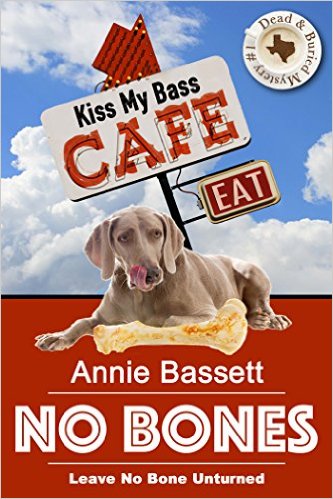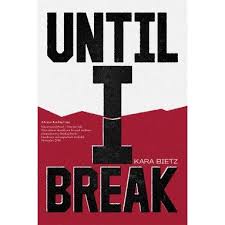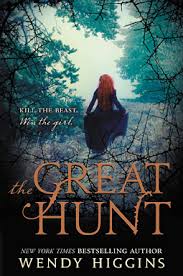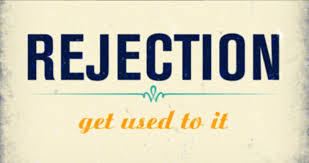by K.C. Maguire

This week I had a ton of fun interviewing fellow Space City Scribes, Monica Shaughnessy and Mandy Broughton. Both are familiar to readers of this blog. Together, they are launching an exciting new series under the pseudonym, Annie Basset. The debut, No Bones, released last week and kicks off the Dead and Buried series in criminal style! When I asked Monica and Mandy about the series and the challenges of co-writing for the first time, here’s what they had to say.
KC: No Bones is the first in a series of crime books featuring sniffer dogs and colorful characters in small town Texas. How did you come up with the concept?
MB: It’s funny because even coming up with the series was a joint effort. It all started with a missing woman in Montgomery County, Texas, Danielle Sleeper. http://www.bringdaniellehome.com
Through a series of events, I have been involved in helping search for Danielle. People who know that I’m an author suggested I write a True Crime story about Danielle’s case. But I’m a fiction writer. I would never be able to tell the story the way it should be told. Danielle, her kids, and her parents need justice. I am not the writer that can do that. I pray for her recovery every day–dead or alive–her children and parents need to know what happened. The community she lives in needs to know. The person or persons responsible for her disappearance need to be held accountable.
As I joined in one of the searches, I came to admire Texas Equusearch http://www.texasequusearch.org and Klaas Kids http://www.klaaskidssar.org for their dedication to the lost and missing. The searchers donate their time, money, horses, and dogs to help find those who are lost. They do it because they care. They do it because it is the right thing to do–to help a family find answers and closure.
And from this great group of volunteers, I observed wonderful personalities, full of passion and dedication.
I told Monica we needed a passionate main character who does Search and Recovery (SAR) on horses. Monica said she thought horses would be too difficult. She said she loves dogs and can write all day about them. What if we used SAR dogs? I said I love dogs too and off we went.
MS: My answer is a lot less fantastical than Mandy’s, so I’ll keep it short. I think we both naturally gravitated toward the small town Texas theme because we’ve both experienced that unique culture and are able to write about it authentically. As for dogs, yeah, I’m passionate about them. So it makes complete sense for me to write about them. Besides, I wanted to balance out my feline books (Cattarina Mysteries) with a little canine energy!
KC: You have both written in other genres, and in other pockets of the mystery genre. How did writing this book compare with the other genres you’ve tackled?
MB: I’ve had to keep my target audience in mind. This has been difficult because I like a wide variety of genres–sci-fi, cozy, thriller, horror, just to name a few. With a dog cozy, it SCREAMS cutesy. Puppy dog eyes! Silliness (okay, I am into silliness but Monica edits most of it out). With cutesy, silliness, and a barking good time firmly set in my brain, then I can write for dog mystery lovers.
MS: I tend to write about the bizarre: talking cats, blind dates with Satan, children from other worlds, and blood-thirsty jackalopes. So this is one of my few “mainstream” stories. And Mandy’s right about the audience. We tried to keep it firmly in mind when writing and not take any ‘off genre’ detours.
KC: This is your first time collaborating. How did you find the experience compared with writing as a sole author? How did you go about setting out who would do what in the drafting process?
MB: This is my first collaborative effort. Work divided itself very neatly along our strengths. Monica is a detailed plotter. She wrote a chapter by chapter outline. I think too much about crime so I always have an idea or thirty on a crime and its perpetrators. Monica is disciplined enough to keep herself and, more importantly, me, on track. I only veered off a couple of times. I’m the Tasmanian devil of writing first drafts. Monica can pick apart a first draft easier than a dog picking a bone clean. Monica has a great character sheet she created, full of arcs and ideas to carry us through a series.
The fact that someone was expecting me to finish and publish has helped me in so many ways. I have three completed novels on my computer but they are not out because I’m currently “editing” them (editing = sit until they are magically perfect). I hate to let people down so having a writing duo made me hold to a deadline. My daughter had a moderate to serious accident during the second half of writing this book (she’s doing better, just very slow recovery and still not 100%). Finishing this book has been one of the hardest things I’ve ever had to do. Knowing that Monica was there waiting on me (and cracking the whip!) helped me push through when I felt like I couldn’t write another word.
MS: As any writer knows, you might start strong – great plot, tons of character backstories, free time to craft – and then life gets in the way. This happened to both of us. Mandy mentioned her daughter. But I had my own turn around. I began working for a wonderful company full time in March, and while it’s a terrific boost to my career and bank account, writing temporarily took a back seat. So yes, yes, we divided work based on our strengths. Mandy’s great at first drafts, and I’m great at second drafts (and plotting). But where I truly think collaboration saved us was during these hard times. When Mandy’s daughter was ill, I gave her lots of encouragement and helped push us forward. When I got bogged down with a new job, Mandy began shouldering the final edits. So we each helped the other at different times. That’s a true partnership.
KC: Were there any major disagreements during the writing process?
MB: At one point in the writing, Monica and I disagreed on a clue/mystery point. It was about three days of going back and forth until we finally agreed on how to handle Cecil’s truck. Looking back, I think it’s pretty funny that we disagreed about such a minor point. No one would probably care when they read the book. We agreed on major plot points, characters, arcs, and all sorts of things but that silly truck gave us fits for a few days.
We still are at loggerheads about which dog is the smartest. Of course, a German Shepherd is the smartest dog. But, randomly, during the day, I get emails that said “Border Collie” but I would delete it because I’m sure Monica meant to type “German Shepherd.”
MS: I think we’ll have to agree to disagree on this one. Border collies are the smartest, hands down. My grandfather had a border collie named Nipper that helped him work his sheep herd, and I grew up watching this special relationship. That dog not only knew my grandfather’s hand signals and different whistles (several dozen), but he read his body language, too, and kept the herd moving wherever they were supposed to go. Tragically, after my grandfather died and the sheep herd was sold, Nipper ran away and was never seen again. This broke my heart as a kid. I always wondered if the dog left to find another old shepherd in need of a companion.
KC: It seems that the mystery genre (along with the romance genre) is blossoming in terms of self-publishing. Why do you think those particular genres have been so successful outside the traditional publishing model?
MB: I think that readers can’t get enough of mystery or romance. From that love of reading, readers are willing to give self-pubbed authors a chance. They are very forgiving too because I believe they have a voracious appetite (I know–I’m one of them!). They want to read in their beloved genre. And I’m grateful for the opportunity to help satisfy that appetite.
MS: I completely agree. Like romance readers, mystery readers (especially cozy readers) are voracious and can go through an entire series in just a few days. Indie publishing lends itself to this model. Buying traditional paperbacks at $6.99 is not only expensive, it clutters your house. I’m not talking about a lovely filled bookcase. I’m talking about stacks and stacks of books everywhere! And then there’s lugging them to the used bookstore. Low pricing and digital publishing make indie books the perfect choice for cozy readers. That’s why it’s taking off. Big time.
KC: How difficult is it to write a book where the main character shares so much page space with animal characters and where, in some ways, the animal characters are as major as the human characters in terms of character development? How do you go about writing rounded and believable animal characters like Sasha?
MB: This was mostly Monica. She is excellent at character development. I tended to get caught up in the action and would forget main characters while I laid clues and suspicion. But Monica was always there with her red pen, figuratively, to fix a scene. Or even the blurb. I wrote the first draft of the blurb and completely left out Sasha. I was totally in the doghouse for that faux pas.
I have watched about a thousand YouTube videos of different SAR dogs. Even through the computer, their personalities came through. I tried to combine or see the dogs and the characters in my head while I wrote. It was the best way to keep me grounded.
MS: I have a greater sense of empathy than the average person, and because of this, I am able to get inside heads and hearts more easily. Human or animal, doesn’t matter. As you can imagine, this makes every day living a little more difficult. But it’s a tailor made trait for a writer. I’m also keenly observant, eerily so. And if you need any more convincing, just read The Tell-Tail Heart, book one of my Cattarina Mysteries. Cat lovers everywhere have praised me for nailing her personality and thoughts and POV.
KC: When can we expect to see book 2? How often do you plan to release “Dead & Buried” mysteries?
MB: Book 2, Dog Gone, is deep into plotting. I sent Monica a rough “big 5 scenes” idea for book 2. True to her dedication to the series, she dropped everything and immediately provided feedback. Or maybe my ideas were so crazy that she felt I needed guidance. But either way, we tend to agree and build on each other’s ideas that are thrown out there. I think it is truly a case of Proverbs 27:17 As iron is sharpened by iron; one person sharpens another.
The plan is for Dog Gone to be released later in 2016. And we’d love book 3 out in early 2017.
MS: Yes, I’d agree with early Christmas of 2016 for Dog Gone. I know, I know, that’s six months away. You might be thinking, “Hey, other cozy writers are penning a book a month!” But ask yourself this, how is it possible to publish a 200 page book, complete with editing, in only 30 days? It’s not. That’s why some unscrupulous authors are outsourcing their writing to other countries or to starving college students or to anyone willing to churn out content for pennies. Whenever you read a review, and it says, “This book reads like it was written by a kid,” it just might be true. Sorry, self-publishing content mills are a big pet peeve of mine, especially when Mandy and I have worked so hard to create a quality book. So while our publishing schedule may not rival some cozy authors’, you can count on a quality product authentically written by two Texas women. Who love dogs.
Thanks for the interview my fellow Scribes!!!!



![happy-labor-day-15661549[1]](https://spacecityscribes.files.wordpress.com/2016/09/happy-labor-day-156615491.jpg?w=600)
 Interview by K. C. Maguire
Interview by K. C. Maguire
 The movie Genius, starring Jude Law and Colin Firth, is catching buzz in writerly circles. It’s the story of famed editor, Max Perkins, and his protege, Thomas Wolfe. Okay, so the reviews aren’t great. Ironically, one reviewer said the movie was overly long and could’ve used an editor’s red pen itself. 🙂 But that’s not going to stop me from seeing it, and here’s why…
The movie Genius, starring Jude Law and Colin Firth, is catching buzz in writerly circles. It’s the story of famed editor, Max Perkins, and his protege, Thomas Wolfe. Okay, so the reviews aren’t great. Ironically, one reviewer said the movie was overly long and could’ve used an editor’s red pen itself. 🙂 But that’s not going to stop me from seeing it, and here’s why…








